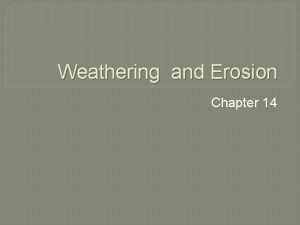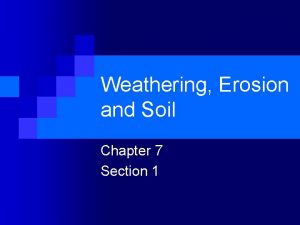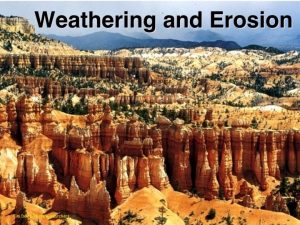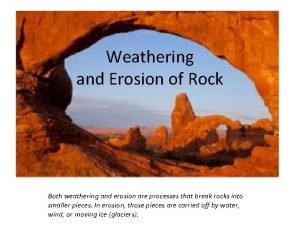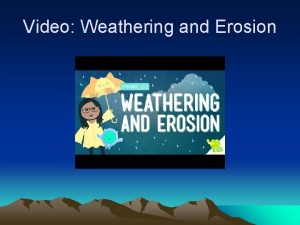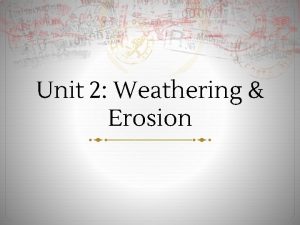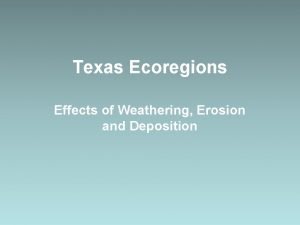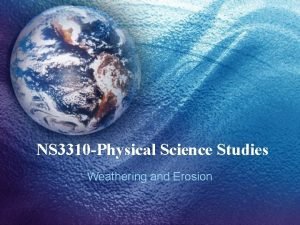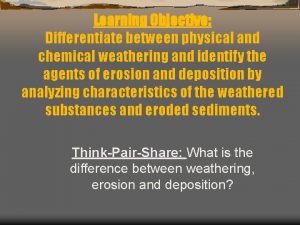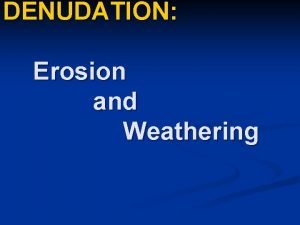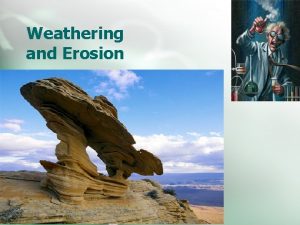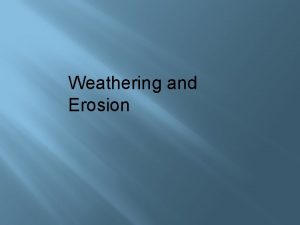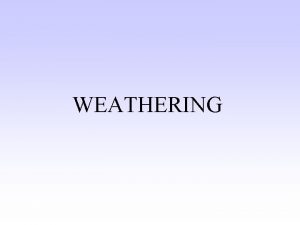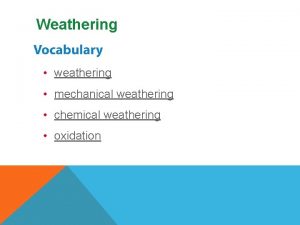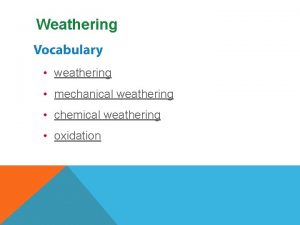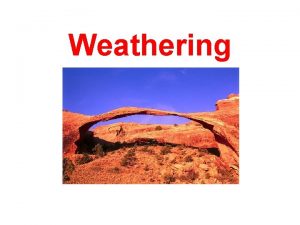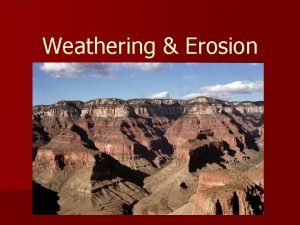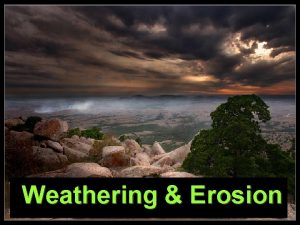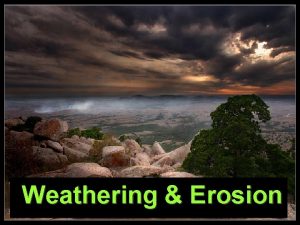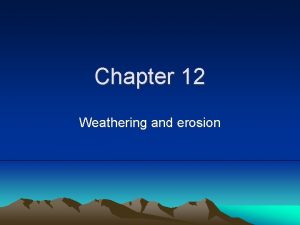Chapter 6 Denudation Weathering and erosion Learning outcomes













- Slides: 13

Chapter 6 Denudation: Weathering and erosion

Learning outcomes In this chapter you will learn: • How the surface of the Earth is shaped by denudation • That both weathering and erosion are known as denudation • About landforms that are created by these processes • How humans can interfere with these processes

Denudation • • Rocks and soil worn down by processes Collectively known as denudation Two main processes: weathering and erosion Weathering – breakdown of exposed rock, material remains • Erosion – breakdown of rock and removal of particles Can you give examples of weathering? Exam hint: You may be asked to explain what weathering and erosion are.

Weathering and erosion Weathering Erosion Mechanical weathering: • rocks broken into smaller pieces • freeze-thaw action Chemical weathering: • rocks dissolved • chemical reaction • carbonation Moving water (Ch 11) Moving ice (Ch 13) Moving wind (Ch 19) Exam hint: You need to be able to give examples of mechanical and chemical weathering.

Mechanical weathering: Freeze-thaw action • • • Occurs high in mountains Lots of precipitation (rain, sleet, snow) Temperature drops below freezing (1) During day, water seeps into cracks in rocks (2) At night, temperature drops, water freezes and expands (3) Process continues and weakens rock – pieces of rock break off and gather as scree at base of slope Exam hint: You need to be able to describe how freeze-thaw action weathers rocks.

Chemical weathering: Carbonation • • • Rain takes in carbon dioxide from atmosphere Rainwater mixes with carbon dioxide Forms a weak carbonic acid Carbonic acid effects limestone Limestone contains 80% calcium carbonate Weak carbonic acid reacts with calcium carbonate in limestone and dissolves it • Permeable rock – so rainwater passes down through rock Exam hint: You need to be able to describe how carbonation weathers rocks.

Karst landscape • Karst landscape – area of bare limestone rock, exposed to weather • The Burren, Co. Clare – soil removed by glaciation • Unique landscape – surface and underground features Exam hint: You may be asked to explain what a karst landscape is and give an example.

Karst landscape: Surface features Limestone pavement Swallow hole • Rainwater passes through vertical • River reaches limestone surface joints • Carbonation widens joints and bedding planes • Carbonation of surface and joints • River disappears underground • Joints become wider through swallow hole • Creates grooves – grikes • Vary in size • Block in between – clints • Pollnagollum – 6 metres wide, 16 • Known as limestone pavement metres deep Exam hint: You need to be able to describe surface features and how they were formed.

Karst landscape: Underground features Caves and caverns Stalactites, stalagmites and pillars • Rivers flow underground • Carbonation enlarges passages • Form caves • Can be further enlarged • Form large chambers – caverns • Ailwee Caves, the Burren • Water seeps through rock • Carries dissolved limestone • Water reaches roof of cave or cavern • Drops evaporate, leave behind deposits of calcite • Build up, form stalactites (from roof) • Drops may fall on ground • Evaporate and leave calcite • Build up, form stalagmites (from floor) • Stalactite and stalagmite may meet – form pillar/curtain Exam hint: You need to be able to describe underground features and how they were formed.

Karst landscape: Underground features Explain how these underground features are formed.

The Burren – A karst landscape • Unique landscape • Region of exposed limestone • Limestone formed 300 million years ago • Chemical weathering • Major tourist attraction • Visited by botanists, adventurers, geologists • Creates employment Exam hint: You need to be able to describe the Burren and explain why tourists are attracted to it.

The Burren – Tourism Advantages Disadvantages • Provides employment • Reduces migration • Brings income – better services and infrastructure • Creates spin-off businesses • Increases pollution • Conflict over visitor centre • New buildings can destroy scenery • Walkers damage flora and fauna Exam hint: You may be asked about the advantages and disadvantages of tourism in the Burren.

Sample answer (i) Ø (ii) Ø Explain three reasons why tourists might like to visit the Burren in Co. Clare. Answer: The Burren is a unique karst landscape with many surface and underground features. It attracts botanists who come to see the unusual plant life. Geologists are interested in the rock features. Adventurers come to explore the caves and caverns. Describe one advantage and one disadvantage of tourism in the area. Answer: One advantage of tourism in the area is that it creates employment. One disadvantage is that increased pollution can damage the limestone.
 Chapter 14 weathering and erosion review answers
Chapter 14 weathering and erosion review answers Chapter 7 weathering erosion and soil
Chapter 7 weathering erosion and soil Rill erosion
Rill erosion Llano uplift weathering erosion and deposition
Llano uplift weathering erosion and deposition The three types of weathering
The three types of weathering Double jeopardy
Double jeopardy Bill nye the science guy weathering and erosion
Bill nye the science guy weathering and erosion Exfoliation weathering definition
Exfoliation weathering definition Weathering and erosion difference youtube video
Weathering and erosion difference youtube video Questions on weathering and erosion
Questions on weathering and erosion Weathering in piney woods
Weathering in piney woods Deposition in south texas plains
Deposition in south texas plains Weathering
Weathering Differentiate between chemical and physical weathering.
Differentiate between chemical and physical weathering.
